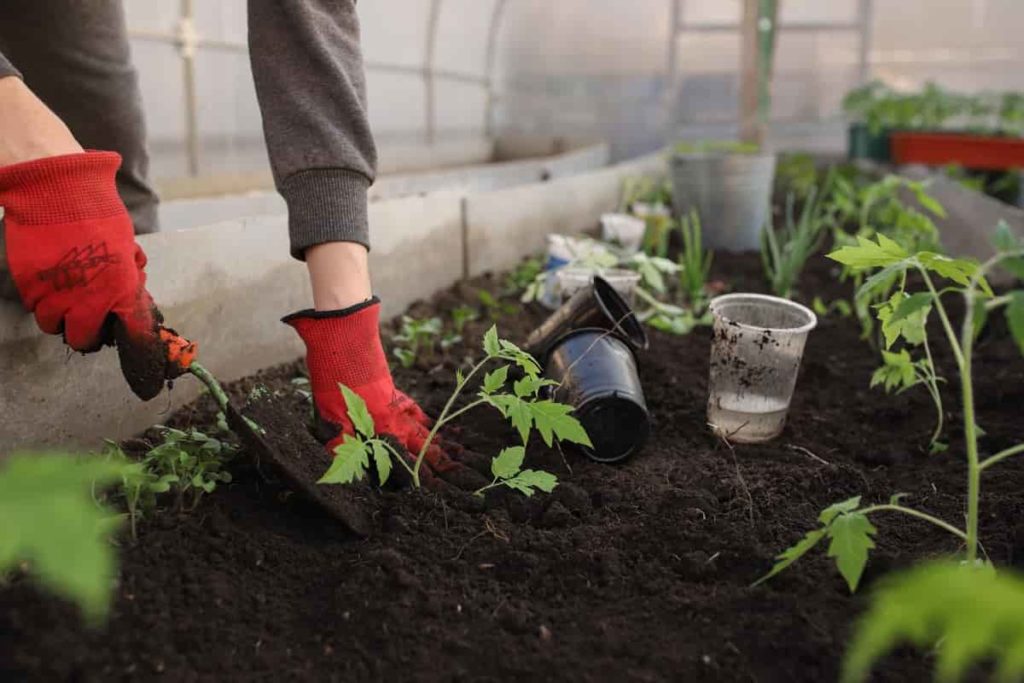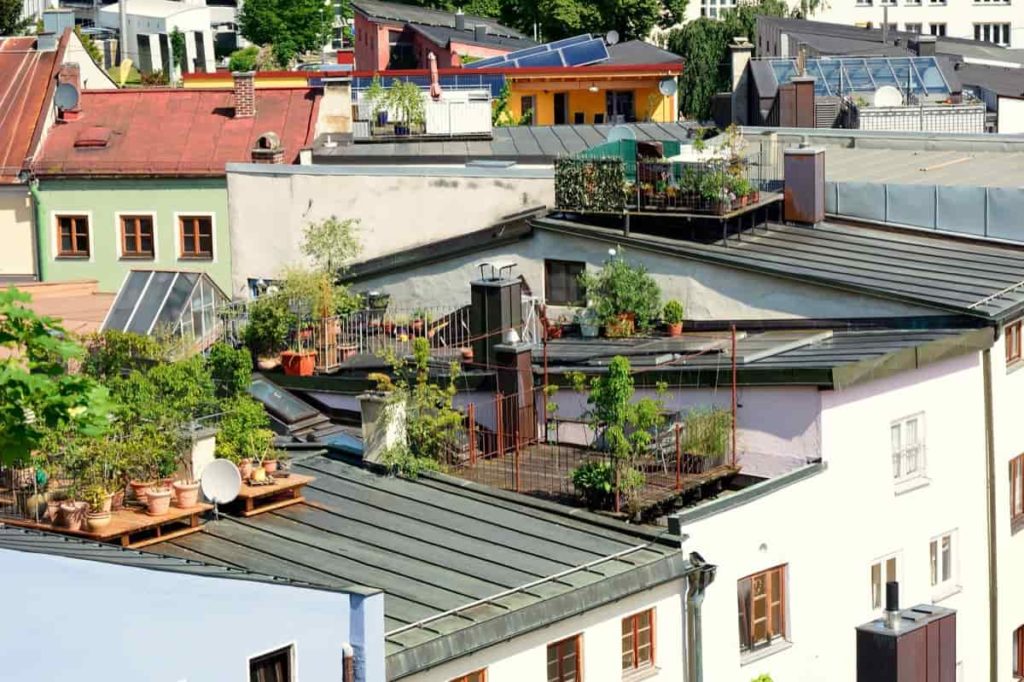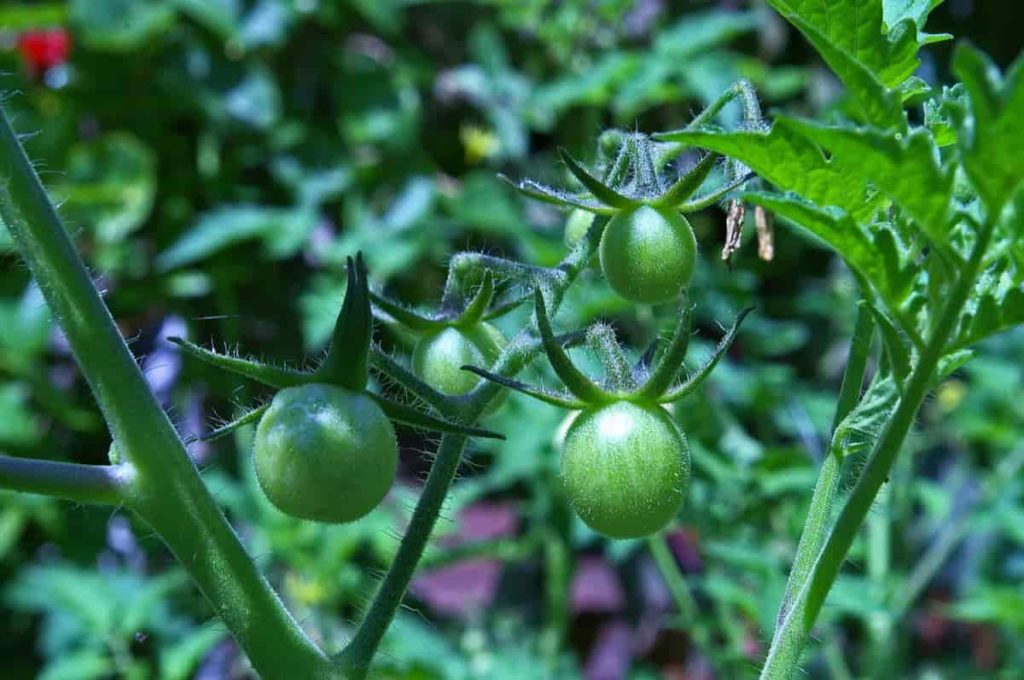People are moving from rural regions to urban ones because of urbanization. One such major city in India is Delhi. Apartments are becoming more popular in Delhi areas since they can accommodate more people in a smaller areas. As a result of their hectic schedules, individuals begin to feel distanced from the natural world! Because of the scarcity of land in cities, having a roof or terrace garden is an ideal way to enjoy the outdoors while being close to the city. Let’s check out how to start a terrace garden from scratch in Delhi below.

The terrace garden is a terrific method to grow flowers and vegetables in an apartment or house without a yard. Not only that, but it isn’t that difficult! Gardening on a balcony can have a calming effect. Even a half-hour spent in your terrace garden can help you de-stress. Terrace gardens are famous, but many people have no idea where to begin. Make a simple terrace garden with the help of this step-by-by-step tutorial.
Below we will learn how to prepare the soil for a terrace garden, terrace garden equipment, how to plan a terrace garden, how to cover a terrace garden, drainage system for terrace garden, terrace gardening ideas for home in Delhi, terrace vegetable gardening in containers and raised beds, how to protect your plants from bugs and UV rays, and tips to start a cheap and effective terrace garden in New Delhi.
Advantages of a terrace garden
Terrace gardens enable homeowners to grow their plants, regardless of their backyard conditions. When it comes to urban gardening, those who live in flats and apartments often choose terrace gardens. Unlike on-the-ground gardens or houseplants, terrace gardens are more likely to be exposed to full sunlight. Because of the abundant sunshine, vegetables, sun-loving flowers, and other plants can thrive in this climate.
Weeds and local fauna (animals) can make growing particular plants in ground gardens difficult. Plants in terrace gardens are protected from pests and weeds since they are out of their natural habitat. This reduces the frequency and severity of weeding. Gardening on the terrace can transform an otherwise uninspiring expanse of concrete into an environment that is both restful and interesting.
Disadvantages of terrace garden
One major drawback to terrace gardening is figuring out how to keep the plants watered. Since fixtures and water pipes are further away and drip watering systems and sprinklers are more complicated to install, terrace gardens tend to be thirstier than other gardens. For gardens on terraces, it’s critical to choose robust plants that can withstand the extremes of heat and wind that they are subjected to more often than other gardens.
Due to their elevation, terrace gardens must be planted in containers or elevated garden beds, which limits the range of plants that can be used. Gardening in a container is more expensive than growing in the ground. Terraces can only take so much more weight before they need to be replaced. Consider the weight of the containers and soil as well as a water cistern if you wish to use one when building your terrace garden.
In case you missed it: How to Make Money from Terrace Gardening?

How to start a terrace garden from scratch in Delhi: A step-by-step guide to growing a terrace garden in Delhi
Waterproof your terrace
Verify that your structure can support the additional weight of plants before adding any. Make sure your terrace’s waterproofing is in good condition. To prevent further leaks, it’s best to reapply the waterproofing. There are two methods to create terrace gardens: you can cover the whole area with soil to create a lawn or sow seeds in clay pots.
Ensure that the terrace is correctly waterproofed before covering the whole terrace with soil to prevent leaks into the house. The terrace slab should be coated with a waterproofing coating. An insulating layer must be placed on the waterproofing layer to keep it safe.
Install a drainage layer
For any plant life to flourish, it must take in both water and nutrients. Therefore, the soil has to be porous so that air can travel through it and water can drain out of it. The plants will not grow because the soil is too saturated with water. Because of this, a drainage layer on the terrace is required. Therefore, a drainage layer must be placed above the insulation layer to drain the surplus water.
Drainage mats are often used for the function of the drainage layer. A geotextile filter layer must separate drainage and soil layers. It prevents soil or plant matter from being washed away by flowing water, which would otherwise clog the drains if it didn’t happen. Additionally, it prevents the soil and any other planting media from shifting. Following the filter layer, the soil mixture used for growing plants should be added.
In the lack of contemporary materials, a bed of burned coal and sand might be spread with perforated pipes, draining water off the terrace. No need to work more if you want a standard terrace garden with pots. Ensure that any excess water drains from the pots have somewhere to go. Setting up a water supply to water your garden on your terrace is essential. The water supply must be near your terrace; failing to do so would make the process of watering the plants demanding.
It is necessary to determine the wind speed on your terrace since, in comparison to the grounds, terraces often have a higher average wind speed. If the annual average wind speed is more significant, you must erect a trellis on your terrace. They are helpful in reducing the force of the wind and can also be used in vertical gardening designs.
Consider the terrace slope
Before you begin, remember that your terrace garden design must match the surroundings. The slope of your terrace garden will need to be considered in your design designs. This necessitates a solid understanding of the slope gradient you’re climbing. Calculating the rise and the run of the slope you are dealing with is essential. Slope run and rise are horizontal measurements of the distance from hilltop to bottom; nevertheless, they are not equal. The height and breadth of each bed can be more accurately determined using these measurements.
Make a design for your terrace garden
First, you must prepare a basic terrace garden design as you start putting your gardening abilities into action. Make preparations for planting your greens by formulating a strategy for doing so. Whether you want to plant plants in pots, raised beds, or use the vertical area on your patio, you can use any of these options. To acquire your recommended fresh air and connect with nature daily, you could also create a seating area in the middle of your garden.
Select your plants for your terrace garden
Creating a terrace garden involves this extremely intriguing phase in the process. Fiber-rooted plants are preferred over deep-rooted ones since they don’t need as much soil depth and, as a result, are lighter in weight. Consider the shade your terrace offers and choose plants that can grow in this environment.
In case you missed it: Gardening Basics for Beginners: For Pots, Terrace, Balcony, and Backyard

The shady sections are designated for the weaker plants that can survive with less direct sunshine. However, plants that need a significant quantity of sunshine should be positioned in places that do not get any shadow. You can get the essential plants’ seeds from the local nurseries or order them online.
Choose the ideal containers or raised beds
The use of pots and other plant containers is essential for terrace gardening. Depending on the requirements that you have, you can either utilize cement pots or clay pots. You can also purchase raised beds for your terrace garden as an alternative to the standard beds seen in most gardens.
The most notable benefit of raised beds is that they are far more spacious than pots. They’re thus ideal for growing vegetables. You can get trellises to support your climbing plants, which will be helpful for vertical gardening. You can adorn your terrace garden by hanging a few tiny blooming plants from the terrace.
Start preparing the soil for your terrace garden
When the soil is healthy, so are the plants that grow in it! The key to successfully growing healthy plants is to have soil that has been adequately conditioned and fed. Combine organic compost with the soil to create your potting mixture. Your terrace garden’s soil should be neither excessively compacted nor too light. The soil needs consistent consistency; plants do best in crumbly soil that can hold onto moisture.
Make frequent applications of organic compost to your garden soil. When it rains, the soil in your terrace garden risks losing its essential nutrients. As a result, fertilizing them is necessary if you want a healthy output from them. Avoid using chemical fertilizers because they will not only get into your system but also damage the beneficial bacteria and microorganisms already in the soil.
To make your potting mix, combine equal parts of coco peat, organic compost, and red sand in a large mixing container. Before putting it in pots, give your potting mix a good stir, and then let it sit for a week or two to settle. Make sure your potting soil has a uniform texture. You can continue to fertilize your soil regularly to maintain good health. This, in turn, will maintain the health of your greens.
Install the wind barriers
If you live in an area where high winds often blow through, you can consider erecting wind barriers to protect the plants you grow there. The use of wind barriers can lessen the force of the wind while also protecting your plants. Determine the wind direction before building wind barriers.
Wind barriers can be made from various structures, including shelterbelts, trellises, hedges, and fences. You need to ensure that the wind barrier you build lessens the force of the wind, but it also has to enable enough air circulation for your plants. Putting up wind barriers does not have to be expensive; you can construct one independently with a helping hand’s assistance. The most effective protection against wind is trellises.
Grow vertical on your terrace
Because of the limited amount of horizontal area available for gardening on a terrace, it is a smart idea to promote the practice of vertical gardening. For this reason, a fan of terrace gardens needs to include a more significant number of climbers and trailers in his landscape.
In case you missed it: How to Start a Terrace Garden from Scratch: A Beginner’s Guide

As well as climbing over an elegant arch, some of these plants can spread out over the top of the boundary wall and hide the building’s bricks and concrete. When positioned in the appropriate locations, many baskets filled with either blooming or foliage plants can be shown tremendous advantage.
Water your terrace garden
Taking care of the plants requires regular watering. During the summer, plants need to be watered twice per week, while during the winter, the soil’s moisture level has to be monitored before watering can take place. You can test the soil’s moisture content by pushing it down with your hands. When it rains, watering your plants is a no-no.
The ‘Self-watering’ containers will be your best bet when growing plants in pots on a terrace. It is an innovative approach to gardening. These containers have overflow holes rather than drainage holes so excess liquid can escape. Through the overflow perforations, excess water is directed into a collector where it is stored. This water can be recycled later, preventing the nutrients and water from being wasted.
It is hung over a perforated water tank on a platform where the plants are grown. The plant’s roots will grow through this media as they spread out. The reservoir functions to collect any surplus water and nutrients so that they can be reused in the system. Utilizing this method prevents the loss of both water and nutrients.
The fundamental idea behind drip watering was to effectively conserve around 80 percent of the water wasted in the flood irrigation process. Even with only a wick and a bottle, you can do drip irrigation on your plants. However, its principle is still the same: water should drain out gradually.
When it comes to drip watering, planning is quite crucial. When designing a drip watering system, consider the wagering requirements of each plant, its exposure to heat and light, and the kind of soil it grows in. Drip tubes have been strung up all over the garden to provide plants with adequate water. The garden’s needs determine whether micro-sprinkler heads, porous pipes, or equally spaced emitters are installed. Drip watering systems have several benefits, one of which is that they can be automated.
Mulch your terrace garden
The use of mulch is an excellent method for preserving the health of your plants and ensuring that they get sufficient amounts of water. Because of the mulch, you won’t have to worry about any pests damaging your plants, and the soil will be able to hold its moisture for much longer. You can use hay, crushed wood, or even fruit peels as mulch.
In case you missed it: Top 15 Herbs to Grow on the Terrace

Pest control
Invasive pests will always find a way to devour your plants, no matter how effectively you treat them. To protect your plants and keep insects away while doing so, you can use natural insecticides. Shaking baking soda, neem oil, and soapy water together creates natural pesticides. Spraying your plants with this enchanted concoction regularly will allow them to flourish without the presence of pesky insects.
Protect your terrace garden from UV rays and birds
Your plant faces danger from more than just unwanted insects and animals. As soon as it produces vegetables, birds and UV rays can threaten it. You can drape a wire mesh or a green garden net to protect your plants.
Tips for cheap and effective terrace gardening
Creating a terrace garden from scratch might be taxing on your financial resources, but if you put these wise tips into action, your financial resources will reward you. Repurpose and reuse the old pieces of furniture in your home by transforming them into planters for your indoor plants. Anything can be repurposed into a container, including old cartons, cardboard boxes, paint boxes, food containers, and even tables.
You do not need to purchase individual pots to grow your plants. Instead, you might spruce up the things you already have lying about your home and put them to use. This will result in financial savings. If you want to grow many plants on your terrace, you should purchase seeds in bulk to save money on the project. Buying in bulk is the best way to get a better deal.
Instead of utilizing artificial fertilizers, you can give your plants a nutritional boost by composting organic residues such as banana peels, coffee grinds, fruit peels, or tea. This saves money and keeps food chemical-free.
In case you missed it: Top 18 Flowers to Grow on the Terrace

Best vegetables to grow on terraces of Delhi
Chilli, tomatoes, potatoes, brinjal, bitter guard, cucumber, spinach, radish, capsicum, carrots, and many other vegetables can be grown on the terraces of Delhi.
Best fruits to grow on terraces of Delhi
Papaya, pomegranate, lemons, oranges, mulberry, pineapples, and other fruits can be grown easily on the terraces of Delhi.
Best flowers to grow on terraces of Delhi
Marigold, hibiscus, roses, sunflowers, jasmines, lilies, and other flowers can be grown easily on the terraces of Delhi.
Best herbs to grow on terraces of Delhi
Rosemary, thyme, oregano, parsley, chives, mint, cilantro, and basil are among the many herbs that can be grown on the terraces of Delhi.
Conclusion
Putting a garden on your terrace should not be difficult if you follow these guidelines. It is recommended that you begin with a small number of plants and then gradually increase the number until you reach the desired density. There is a large number of expert assistance options available that can be used to set up a terrace garden. The terrace garden demands adequate upkeep and attention. Plants need consistent watering and should be shielded from predatory insects and worms.
- Flower Garden Designs and Layouts for Beginners
- Planting and Spacing Techniques in Papaya: A Beginner’s Guide
- Growing Gold: Essential Techniques for Planting Pineapples
- How to Make Kalanchoe Plant Bushy: Home Remedies and Solutions
- 11 Reasons Why Your Gardenia is Not Blooming: Home Remedies and Solutions
- Eco Elegance: The Guide to Designing a Drought-Tolerant Landscape
- Gardening on a Slope: Strategies for Hillside Landscaping
- Nourish and Flourish: Top Organic Mulches for Thriving House Plants
- Everything You Want to Know about Indian Mogra Flower: Discover Uses and Growing
- Green Thumb Success: Expert Tips for Cultivating Greenhouse Pumpkins All Year Round
- Maximize Growth & Flavor: The Ultimate Guide to Companion Planting in Herb Gardens
- How to Control Rhododendron Problems Naturally: Home Remedies and Organic Ways to Fix Them
- Natural Magic: The Remarkable Benefits of Cinnamon for Plants
- Best Steps to Revive Dying Tulip with Natural and Organic Treatment
- 10 Reasons Why Your Angel Trumpet is Not Blooming: Remedies and Treatment
- How to Fix Periwinkle Leaf and Flower-Related Problems: Natural Remedies and Solutions
- How to Fix Zinnias Leaf and Flower Problems: Discover Natural and Home Remedies
- Organic Steps to Induce Lemon Tree Flowers: A Comprehensive Guide
- Bloom Booster: Crafting the Perfect Homemade Bougainvillea Fertilizer
- Optimizing Growth: A Guide to Applying NPK Fertilizer for Potted Plants
- 10 Best Homemade Fertilizers for Rubber Plant: DIY Recipes and Application Method
- How to Boost Female Pumpkin Flowers: Effective Steps for More Flowers and High Yields
- Transform Your Indoor Garden: Top Benefits of Pink Salt for Houseplants
- 10 Best Homemade Fertilizers for Peacock Plants (Calathea): Easy DIY Guide
- Unlock Blooms: 9 Reasons Why Your Potted Chrysanthemum is Not Blooming
- 8 Reasons Why Your Potted Hibiscus is Not Blooming: Fix it with Simple Solutions
- Unlock Blooms: 9 Key Reasons Your Potted Frangipani Won’t Flower
- 10 Reasons Why Is My Ice Plant Not Blooming: Remedies and Treatment
- 10 Reasons Why My Potted Hydrangea Not Blooming: Treatment and Remedies
- 10 Reasons Why is My Wisteria Not Blooming: Remedies and Treatment
- 10 Reasons Why is My Goldfish Plant Not Blooming: Remedies and Treatment
- Maximize Your Space: Ultimate Guide to Balcony Gardening with Grow Bags
- 10 Reasons Why Your Iris is Not Blooming: Remedies and Treatment
- 10 Reasons Why Your Anthurium Plant is Not Blooming: Treatment and Remedies
- 10 Reasons Why Your Aquaponic Plants Are Not Flowering: Remedies and Treatment
- 10 Reasons Why Your Agapanthus is Not Flowering: Remedies and Treatment